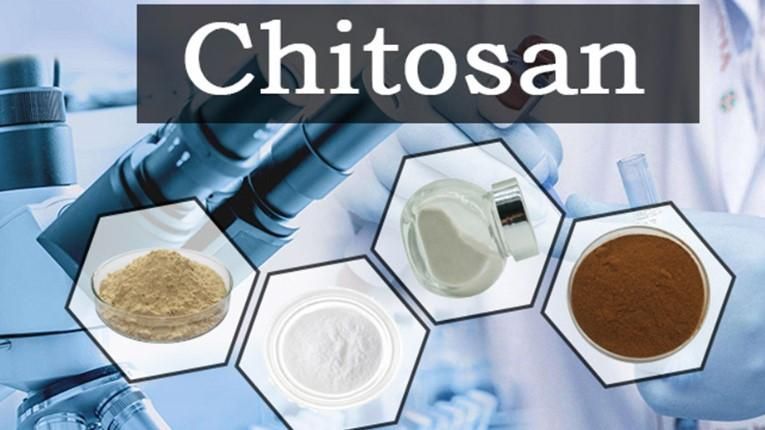Selecting the right chitosan for your project can be one of the most important decisions you make. But choosing the right chitosan with the right specifications can be tricky. This short article helps you ask your chitosan supplier 4 questions when searching for the most suitable chitosan for your academic or commercial project.
Chitosan is a biopolymer that is derived from crustacean shells. It is positively charge (cationic), biocompatible, biodegradable, and nontoxic, making it able to be used in a wide range of applications in various fields, including biomedical engineering, food science, agrochemicals, materials science, to name a few.
- Degree of Deacetylation
One of the key factors to consider when selecting your chitosan is its degree of deacetylation (DDA%). DDA% refers to the percentage of acetyl groups that have been removed from the polymer when processing chitin to chitosan. The higher chitosan’s DDA% is, the higher the bioactivity it tends to have. The different levels of chitosan DDA% are:
Very high DDA%: ≥95% - 99%
High DDA%: ≥90 < 95%
Medium DDA%: >80% - 89%
Low DDA%: 70% - 79%
Typically the higher the chitosan DDA% is the more physiochemical functionalities it has. This is due to the higher charge density of chitosan and the positive charge through its amino groups. This can result in better binding and film-forming properties.
Higher DDA% also tends to be more water-soluble than its lower DDA% counterparts.
2. Molecular Weight
Another important factor is chitosan molecular weight which is measured in kilodaltons with the symbol kDa. Lower molecular chitosan tend to better attach to, cross, absorb into, and permeate cells and tissue more readily than higher molecular weight chitosan. This is primarily related to its small particle size and its affinity to and interactions with other substances.
With all this, lower molecular weight chitosan are often used in drug delivery, tissue engineering, and wound care applications. Whereas higher molecular weight tends to be better suited when chitosan is used to fabricate 2D or 3D forms for scaffolding for example. It also works better when its chelating, fluid absorption, flocculating, and removal of metal ions actions are needed. These are mostly seen in applications such as water treatment, surface disinfecting , and hemostatic action in wounds.
Chitosan with a lower molecular weight is also more water-soluble than lower molecular weight chitosans than lower weight chitosan.
The molecular weight is also an indication of the viscosity of chitosan in aqueous solutions. The higher the molecular weight, the higher the viscosity and vice versa
3. Purity
Another important aspect of chitosan is its purity, which is considered to be its DDA% and the levels of impurities it contains. The higher the DDA% is the higher the purity of chitosan. In addition, the lower the levels of chitosan impurities is the higher its purity and quality. The main impurities that are measured are:
- Protein content
- Ash
- Heavy metals, such as mercury, cadmium, lead, etc.
- Microbes, such as pathogenic bacteria, fungi, etc.
Unacceptable levels of any of these impurities can have chitosan- containing products to be rejected by regulatory agencies, such the FDA, EMA, etc. These impurities also make chitosan harder to solubilize and can interfere with the expected chitosan actions and functionalities.
Consistently and Reproducibility
It's important that your chitosan is the same chitosan from batch-to-batch. In other words, it should be the same chitosan every time it is manufactured and purchased. That way the chitosan will give you the same characteristics and functionalities every time you produce your product.
The consistency and reproducibility of your chitosan is determined by the ability to produce the chitosan with the specifications all the time. These are its DDA%, molecular weight and/or viscosity, and level of impurities. An indication of this can be seen in the chiosan’s Certificate of Analysis (CoA). Therefore it is important to ask your chitosan supplier for CoAs every time you order their chitosan. You should monitor how each chitosan’s CoA numbers compare to the next. Ensure that the important measures are relatively the same from CoA to CoA.
Conclusion
There are many different chitosans available with many different specifications. Choosing the right one for your project can be difficult. Make sure to have your chitosan supplier included in the decision-making process. Ask them questions especially pertaining to the key factors mentioned in this article, i.e., chitosan degree of deacetylation, molecular weight, purity, and consistency and reproducibility. Getting satisfactory answers in these areas will significantly increase the probability that you are selecting the best-suited chitosan for your project.
Choose Chitolytic as your chitosan supplier today!



 StableDiffusion
StableDiffusion StableDiffusion
StableDiffusion StableDiffusion
StableDiffusion Photo by
Photo by  Photo by
Photo by  Photo by
Photo by 
 Photo by
Photo by  Photo by
Photo by  Photo by
Photo by  Photo by
Photo by  Photo by
Photo by 


